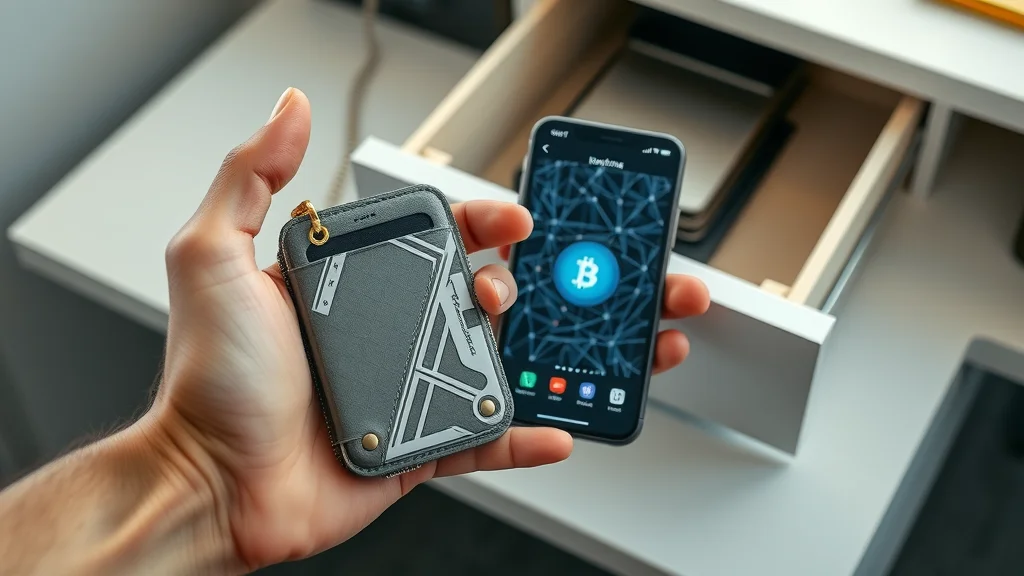An Eye-Opening Introduction to Cryptocurrency
Did you know the total cryptocurrency market cap surpassed $2 trillion in 2021, rivaling the GDP of many nations? This beginner's guide demystifies cryptocurrency, digital currencies, and how they are reshaping finance around the world. Cryptocurrencies have rapidly evolved from obscure digital assets to powerful tools for global payments, investments, and borderless transfer of money. Whether you're curious about Bitcoin, considering digital currencies for your portfolio, or seeking ways to securely send money across borders, this overview provides clear, straightforward explanations to get you started on your cryptocurrency journey. With technology rewriting the rules of finance, understanding how cryptocurrency works opens doors to modern payment methods, potentially life-changing investment opportunities, and a world of decentralized financial assets.

What You’ll Learn About Cryptocurrency
- Core concepts and definitions: what is cryptocurrency and how does it work?
- Introduction to digital currencies and their advantages
- The basics of the cryptocurrency market and how market cap is determined
- How cryptocurrency transactions happen and what you need to know about transaction fees
- Choosing, storing, and securing digital currency
- Risks and rewards: investing, privacy, and global uses
Understanding Cryptocurrency and Digital Currencies
What Is Cryptocurrency?
Cryptocurrency is a digital currency that uses cryptography—advanced codes and secure technology—to keep transactions safe and nearly impossible to counterfeit. Unlike traditional payment methods like credit cards or electronic transfers through banks, cryptocurrencies operate on decentralized digital networks instead of relying on a central bank or financial institutions. Each transaction is verified and recorded in a distributed ledger called the blockchain, making digital assets both transparent and secure. The best-known example, Bitcoin, launched in 2009 and set the stage for hundreds of new digital currencies that now serve unique roles, from simple payments to powering innovative blockchain applications. Understanding cryptocurrency as a type of financial asset can give you greater confidence whether you want to invest, make cross-border transactions, or simply stay informed about the latest trends in digital finance.

How Digital Currencies Differ from Traditional Money
Unlike traditional fiat money, which is issued and managed by a central bank, digital currencies are maintained by decentralized networks of computers around the globe. This means no single authority controls or issues most cryptocurrencies. Decentralization leads to unique benefits—fast global transactions, lower fees in some cases, and increased privacy for users who don't wish to reveal sensitive information. Digital currencies also empower people in regions without access to traditional banking, offering a new form of financial inclusion. While you might swipe a credit card or use a wire transfer to send money with dollars, cryptocurrency relies on cryptographic security to enable direct peer-to-peer transactions, often without lengthy wait times or high costs. Privacy, reduced reliance on financial institutions, and borderless access draw many to the world of digital currency.
"Bitcoin marked the beginning of the modern cryptocurrency era, but hundreds of other coins now compete in the digital currency space." – Financial Analyst
How Does Cryptocurrency Work?
Blockchain Technology and Cryptocurrency Transactions
The backbone of cryptocurrency is blockchain technology. A blockchain is a type of distributed ledger that securely records every transaction across a network of computers. When someone sends digital currency, their transaction is grouped with others into a block. Network participants (called miners or validators) confirm the transactions and add the block to the chain, ensuring transparency and security. Every cryptocurrency transaction is permanent, publicly visible on the blockchain, and protected against tampering by its cryptographic structure. Think of the blockchain as a public record book—only controlled collectively and not by any central bank or single authority. This foundational technology supports not just Bitcoin or Ethereum, but countless crypto assets and tokens powering the growing cryptocurrency market.

Transaction Fees and Processing
When you make a cryptocurrency transaction, you often need to pay a transaction fee. The process differs from traditional payment methods where banks or card companies collect fees. In the cryptocurrency market, transaction fees are paid to the miners or validators who confirm your digital asset transfer. These fees help keep the network running and are influenced by the volume of transactions and the specific cryptocurrency you use. Generally, faster processing requires higher fees, especially when the network faces heavy demand. Compared to international bank transfers or credit card fees, crypto transaction fees can be lower, but understanding these costs—and how they vary—is key for anyone planning to invest or make regular transactions in digital currency. Always check the fee before finalizing your crypto transactions, especially for large sums or during periods of high market activity.
Decentralization, Privacy, and Security
One of the most attractive features of cryptocurrency is decentralization: there’s no central bank overseeing your digital assets or setting rules. This empowers individuals with more control, protects against certain types of fraud, and increases the privacy of financial transactions. Blockchain’s built-in encryption and public verification make manipulating the record very difficult. While most cryptocurrencies provide pseudonymity, which means your public wallet address isn’t linked to your real-world identity, some coins focus on even stronger privacy features. However, this independence comes with responsibility—users must guard their wallet keys and personal information to stay secure. As digital currencies evolve, governments and financial institutions are watching closely, creating new regulations to balance innovation, privacy, and security.
"The beauty of cryptocurrencies is their ability to function without traditional banking institutions, empowering users globally." – Blockchain Expert
A Brief History of Cryptocurrency
Early Digital Currencies and Bitcoin’s Emergence
The dream of a purely digital currency existed long before Bitcoin, but early attempts struggled due to centralization or security flaws. In 2009, a developer (or group) known as Satoshi Nakamoto introduced Bitcoin, the first truly decentralized digital currency. By using blockchain—a distributed digital ledger—Bitcoin bypassed the need for a central bank and solved the “double spending” problem that plagued earlier projects. Its ingenious combination of cryptographic security and consensus validation sparked a revolution in digital finance, inspiring thousands of new coins and tokens and changing how the world views the notion of money itself. Today, this first-mover advantage, plus widespread adoption, keeps Bitcoin as the most recognized cryptocurrency globally, paving the way for further innovation.

Evolution of the Crypto Market
Since Bitcoin’s launch, the cryptocurrency market has grown far beyond a single digital coin. Coins like Ethereum introduced smart contracts—way more than just currency—and thousands of digital assets now serve everything from gaming to digital identity and decentralized finance. The market cap for all cryptocurrencies ballooned, reaching over $2 trillion at its peak in 2021. This rapid growth has led to both booms (like 2017’s ICO craze) and busts, but the underlying technology continues to attract investment and new users. As the crypto market matures, we now see more institutional adoption, governments developing digital assets, and fresh regulations designed to protect users and promote innovation. It’s a fast-moving space, where new opportunities and risks arise nearly every day.
| Year | Milestone | Market Cap (USD) |
|---|---|---|
| 2009 | Bitcoin launch | Negligible |
| 2013 | Multiple cryptocurrencies emerge | $1 Billion+ |
| 2017 | Mass adoption & ICO boom | $600 Billion+ |
| 2021 | Market peak | Over $2 Trillion |
How to Buy and Store Cryptocurrency Safely
Choosing a Cryptocurrency Exchange
If you want to own cryptocurrency, you’ll likely start with a cryptocurrency exchange. These platforms let you buy, sell, or trade popular cryptocurrencies—including Bitcoin, Ethereum, Tether, and many others—using your local currency or digital assets. Each crypto exchange charges its own transaction fees, offers different payment methods (such as credit card, bank transfer, or peer-to-peer swaps), and varies in security measures. When choosing a crypto exchange, look for strong reviews, robust security protocols, and support for the coins you’re interested in. Beginners often start with easy-to-use exchanges, but as you grow, you may look for more advanced features or lower fees to suit your trading habits. Whichever you choose, remember: always enable enhanced security options like two-factor authentication (2FA) to protect your funds.

Types of Cryptocurrency Wallets: Hot vs. Cold Storage
Once you’ve bought cryptocurrency, you need a safe place to store it—a cryptocurrency wallet. Wallets come in several forms, each with its own uses and security level. “Hot” wallets, such as those on exchanges or mobile apps, stay connected to the internet and offer easy access for trading. However, they are more vulnerable to hacking. “Cold” wallets, like hardware wallets or paper wallets, keep your private keys offline, making them far safer for long-term storage. Understanding the strengths and weaknesses of each wallet type helps protect your digital assets from theft or accidental loss.
- Online wallets: Convenient for active trading but vulnerable to hacking
- Hardware wallets: Enhanced security for long-term storage
- Paper wallets: Offline storage method for added protection

Exploring the Cryptocurrency Market: Coins, Tokens, and Market Cap
Major Digital Currencies: Bitcoin, Ethereum, and Beyond
While Bitcoin was the original, today’s cryptocurrency market is filled with thousands of digital currencies—each serving unique purposes. Bitcoin and Ethereum remain by far the most valuable and widely used: Bitcoin serves as “digital gold,” a store of value, while Ethereum powers smart contracts and decentralized apps. Other digital currencies, called altcoins, offer innovations in speed, privacy, or function. Tether, for example, is a “stablecoin” pegged to the US dollar, reducing volatility. Whether you’re looking to invest in bitcoin, try a new payment method, or experiment with decentralized finance, understanding each coin’s role helps you make smarter choices in the fast-moving crypto market.

Understanding Market Cap and Crypto Market Valuations
A key tool for comparing cryptocurrencies is market cap—the total value of a coin’s circulating supply. Market cap is calculated by multiplying each cryptocurrency’s current price by its total number of coins available. This figure gives investors a quick way to gauge the size and popularity of any digital asset and compare it to others on the market. Bitcoin leads the market cap rankings, followed by Ethereum and Tether, making them safer bets for cautious investors. However, newer coins can have small market caps and high volatility, offering both high risk and potential rewards. Always research a coin’s real-world use, developer team, and security before investing—not just its market cap!
| Rank | Coin | Market Cap | Year Launched |
|---|---|---|---|
| 1 | Bitcoin | $850B+ | 2009 |
| 2 | Ethereum | $400B+ | 2015 |
| 3 | Tether | $83B+ | 2014 |
Benefits and Uses of Cryptocurrency
Investment, Payments, and Remittances
People use cryptocurrency for many reasons. For some, it’s a modern investment opportunity—hoping to buy low and sell high as digital currencies gain value. Others rely on crypto for fast, low-fee payments and sending remittances across borders. Since cryptocurrencies are not tied to any central bank, they can be especially helpful for people living in areas without reliable access to traditional banks. Additionally, businesses and online stores worldwide now accept popular coins as a payment method for goods and services. Whether you’re managing portfolio risk, paying for goods, or sending money across countries, cryptocurrencies offer flexibility and speed that make them an attractive financial asset in the modern economy.

Increasing Global Access and Privacy
Cryptocurrency has become a powerful tool for extending financial access across the globe. In many countries, people lack traditional bank accounts or credit cards. With nothing more than a smartphone and internet connection, anyone can open a digital wallet and participate in the crypto market. Another benefit is improved privacy—instead of providing personal information to a bank or payment provider, users may send or receive funds through addresses not directly linked to their identity. While it’s not complete anonymity, cryptocurrencies can offer pseudonymous payments, borderless transfers, and greater financial autonomy for people everywhere.
- Borderless transactions
- Pseudonymous payments
- Access for the unbanked
Risks, Security, and Regulation: What Every Beginner Should Know
Security Risks: Fraud, Hacks, and Scams
While the blockchain itself is extremely secure, individuals need to watch for risks outside the technology. Scams, phishing attempts, fake crypto exchanges, and wallet theft all pose serious threats. Never give out your private keys, always double-check website addresses, and beware of social media offers promising “guaranteed” profits—they could be phishing or even part of a Ponzi scheme. Using multi-factor authentication adds another layer of protection. As the crypto market grows, so do scams targeting beginners, so caution and skepticism are essential when dealing with unknown platforms or offers.

Regulation and Taxes in the United States and Globally
Cryptocurrency laws and taxes can differ significantly. In the United States, digital currencies are treated as property, meaning that buying, selling, or trading cryptocurrency is generally a taxable event. Many other countries are developing or refining rules on how to treat bitcoin and other digital assets. Some central banks are launching digital currency projects or considering harsher rules to prevent illegal uses. Staying up-to-date with the latest policies in your country, recordkeeping, and consulting a tax professional ensures you remain compliant and avoid surprises at tax time.
How to Stay Safe in the Crypto Market
Protecting your crypto assets starts with understanding best practices. Use strong, unique passwords for every digital wallet and exchange, enable two-factor authentication, and keep backup phrases written down and stored offline. Update your computer’s security software, double-check addresses when sending funds, and use reputable sites for all buys and trades. Remember: once you send cryptocurrency, transactions cannot be reversed. By establishing secure habits early, you can enjoy the benefits of the cryptocurrency market while avoiding many common pitfalls that ensnare newcomers.
"Investing in cryptocurrency is not without risks; always do your research before making financial decisions." – Crypto Advisor
A short, animated video visually introduces newcomers to how cryptocurrency works, covering blockchain basics, crypto transactions, and essential security tips for digital assets.
Getting Started: Opening Your First Cryptocurrency Wallet
Creating Accounts and Ensuring Security
To start using cryptocurrency, open a digital wallet account. First, select a reputable wallet provider or download a trusted app or desktop wallet. Follow the prompts to set up your account—this will usually involve creating a secure password and writing down a backup phrase (sometimes called a recovery seed). Store this phrase safely offline; it’s the only way to recover your funds if you lose access. As an extra layer, enable two-factor authentication inside the app, linking it to your phone or authentication device. Never share your seed phrase with anyone, and avoid keeping it in your phone photos or email for extra security.

Making Your First Cryptocurrency Transaction
Once your wallet is ready, you can receive cryptocurrency by sharing your wallet’s public address (a long string of letters and numbers). To send digital currency, get the wallet address of your recipient, select the amount, and confirm the details in your wallet app. Double check the address—crypto transactions are one-way and can’t be reversed if you make a mistake. Many wallets let you view your transaction’s status on the blockchain, letting you verify when funds have arrived at their destination. With practice, sending and receiving cryptocurrency becomes as easy as digital banking, especially for cross-border payments or peer-to-peer transfers.
Factors Influencing the Crypto Market
How News, Technology, and Adoption Affect Cryptocurrency Prices
The crypto market is fast-moving and sensitive to global events. Announcements about regulations by a central bank or government, technological breakthroughs (like a new blockchain upgrade), or major companies accepting digital currency can send prices soaring or tumbling. The rise of social media amplifies these effects, sparking rapid shifts as news spreads globally within minutes. Investors watch for major events such as new legislation, the launch of public blockchain projects, or changes in how financial institutions approach digital assets. If you plan to hold crypto, staying informed about the broader financial landscape helps you anticipate market moves and make smarter decisions.

Market Cap and Volatility Trends
Cryptocurrency prices and market cap can swing wildly in short periods, far more than traditional markets. These shifts often follow cycles of excitement and fear—known as “bull” and “bear” markets. Factors like supply, demand, investor speculation, and world politics all play a role, making the digital asset market both exciting and risky. Experts recommend beginners only invest money they can afford to lose and to diversify their cryptocurrency holdings. Managing risk, avoiding hype, and staying level-headed are keys to weathering market volatility and leveraging the long-term growth potential of crypto assets.
Top Cryptocurrencies to Watch in 2024
Emerging Coins and Blockchain Projects
While Bitcoin and Ethereum dominate, new coins and blockchain projects are reshaping the landscape. Look for digital assets offering unique benefits, such as greater privacy, eco-friendly mining, or support for decentralized finance (DeFi) applications. These coins often launch with innovative features, strong development teams, and growing user bases, marking them as potential market disruptors. However, smaller coins carry higher risk, so stay informed and start small when you’re learning about emerging projects.

Crypto Market Predictions by Analysts
Experts predict continued growth in decentralized finance, non-fungible tokens (NFTs), and blockchain gaming sectors. Market leaders may retain dominance, but analysts are watching for breakouts among privacy coins, green crypto assets, and other disruptive financial technologies. With increased adoption by both individuals and institutions, the next wave of growth may come from broader real-world use: easier payments, new DeFi platforms, or mainstream blockchain integration. As always, research and caution are your best friends in evaluating which cryptocurrencies might surge in the coming year.
This animated video shows step-by-step how to safely buy and trade cryptocurrency, covering exchange security, transaction fees, common market cap pitfalls, and protecting your digital assets.
People Also Ask About Cryptocurrency
How much is $100 worth of crypto?
The value of $100 in cryptocurrency depends on which coin you buy and when you buy it. Cryptocurrency prices are highly volatile and can change rapidly. For example, the amount of Bitcoin or Ethereum you receive for $100 can shift considerably within minutes. Before you invest, check the live prices on your chosen cryptocurrency exchange.
Which crypto is best to invest now?
There is no guaranteed “best” cryptocurrency, but major coins like Bitcoin and Ethereum have large market caps and are often considered safer by experts. However, every digital asset carries risk, so always research the coin’s purpose, development team, and recent performance. Diversification and caution are key for beginners.
How much is $1 in cryptocurrency today?
One US dollar can buy different amounts of cryptocurrency depending on the current exchange rate and the coin you choose. Prices for coins like Bitcoin or Ethereum can fluctuate each second, so always check updated market rates before making a purchase. Most exchanges display live conversion rates for popular cryptocurrencies.
Can you make $1000 a month with crypto?
While some traders and investors claim to earn significant profits from cryptocurrency trading, it is risky, and returns are not guaranteed. Making consistent income with crypto requires deep knowledge, skill, and a sound risk-management strategy. It’s possible to lose money as quickly as you make it in the hyper-volatile crypto market.
Frequently Asked Questions About Cryptocurrency
- Is cryptocurrency legal?
- How do I store my digital currencies safely?
- What are transaction fees and why do they matter?
- Can cryptocurrency be converted into cash?
- What risks should I be aware of as a beginner?
Key Takeaways for Cryptocurrency Beginners
- Cryptocurrency is a digital form of money, powered by blockchain technology.
- Digital currencies are decentralized and typically offer greater privacy.
- The cryptocurrency market is dynamic, with rapid changes in prices and regulation.
- Security and research are essential when investing and using digital currencies.
Next Steps: Join the Cryptocurrency Conversation
We'd love to hear what you think about this! Please add your comments below...
Conclusion: With the basics of cryptocurrency now in your toolkit, take time to research, stay secure, and consider your goals before diving deeper—digital money offers exciting new possibilities for everyone!
Sources
- CoinDesk – https://www.coindesk.com/
- CoinMarketCap – https://www.coinmarketcap.com/
- Investopedia – https://www.investopedia.com/terms/c/cryptocurrency.asp
- SEC Investor Alerts – https://www.sec.gov/oiea/investor-alerts-and-bulletins/ib_fundcryptosec
- IRS Virtual Currencies – https://www.irs.gov/businesses/small-businesses-self-employed/virtual-currencies
To deepen your understanding of cryptocurrency, consider exploring the following resources:
-
“Cryptocurrency | Bitcoin, Ethereum, & Blockchain”: This comprehensive article from Britannica Money provides an in-depth look at the origins, workings, and implications of cryptocurrencies, including Bitcoin and Ethereum. (britannica.com)
-
“What Is Cryptocurrency? Definition & How It Works”: Also from Britannica Money, this resource offers a clear definition and explanation of cryptocurrency, detailing its function as a digital asset and its reliance on blockchain technology. (britannica.com)
These articles will provide you with a solid foundation in cryptocurrency concepts and their impact on the financial landscape.
 Add Row
Add Row  Add
Add 




Write A Comment